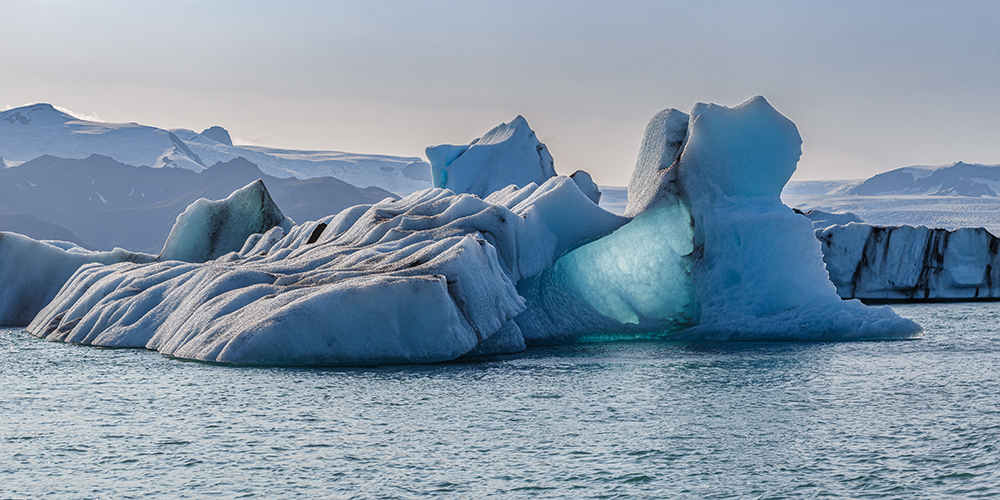Rupert Gladstone develops large computer model ensembles to simulate ice flows in the Antarctic
Our first interviewee is Adjunct Professor Rupert Gladstone from the Arctic Centre of the University of Lapland, Finland. Dr. Gladstone’s research is on a highly impactful topic – how much the Antarctic Ice Sheet will contribute to global sea level rise over the coming centuries.
“This is a question surrounded by uncertainties that can only truly be answered as the future reveals itself. However, we can make estimates to inform policy makers, and we can try to quantify the uncertainties by providing our estimates as probabilities. For example, we can try to say how likely it is that sea level rise will pass 1 meter by 2100 if fossil fuels continue to be burnt at a high rate.”
He explains that the current project does not focus on gathering observations, but rather using existing data to develop computer models to form the projections. One cutting edge aspect of the project is to simulate the role of liquid water at the bed of the Antarctic Ice Sheet.
“Of the two main modes of ice flow, sliding is what allows the fast outlet glaciers to drain ice from the Antarctic interior at speeds of more than 1km per year. Such speeds may not seem fast to the reader – snails move much faster than glaciers – but they are enough, when all of Antarctica’s outlet glaciers are added up, to discharge approximately two million tons of ice every year. This is approximately balanced by snowfall over the ice sheet. But how will the balance change as climate continues to warm?”
Expanding collaboration
Dr. Gladstone’s primary collaboration partner is Ralf Greve, a professor at Hokkaido University in Japan. Their collaboration was enabled by the funding and LUMI resources offered by CSC.
“Ralf and I have known each other for many years, but this Finland–Japan HPC initiative provided the impetus for us to start to work together in an area of mutual interest, namely Antarctica.”
However, more collaboration opportunities are also arising, as Japanese researchers learn more of the topic.
“A new potential partner is Yoshihiro Nakayama, an academic whose interests focus on the ocean side of Antarctic ice sheet – ocean interactions. He is interested in simulating the potential impacts of human interventions to slow glacier loss, a topic that overlaps with my colleague Professor John Moore at the University of Lapland. One such suggested intervention is to anchor buoyant ‘curtains’ to the ocean floor at key locations. These would float up hundreds of meters to prevent warmer waters reaching the floating parts of the Antarctic Ice Sheets, which are important for stabilizing its grounded parts. Another intervention is to drill down to the glacier bed where it slides over the bedrock in order to drain liquid water from the bed, reducing the potential for sliding motion.”
Dr. Gladstone notes that such interventions are, nevertheless, highly controversial.
“Our research in these areas aims not to promote such actions, but rather to predict their likely impacts, both good and bad.”
Powerful infrastructure is required
Access to a world-class supercomputer like LUMI is essential for the success of the project.
“I use LUMI to carry out model ensembles. That means I will be running the computer model hundreds of times, and each of these runs requires hundreds of processors, so large scale HPC is needed here,” Dr. Gladstone explains.
Bit by bit, these model ensembles can give us glimpses into the future and inform decision-making about climate change.
“Each new simulation makes a small contribution to quantifying future uncertainty in Antarctica’s contribution to global sea levels.”
Fostering international research collaboration
In this blog series, we’ll delve into collaborative efforts of seven international research collaboration projects between Finland-Japan and Finland-Colorado that use LUMI supercomputer to address global challenges and top-level research topics in different fields.
Join us as we interview the project leads and hear how these collaborations came to life and how they utilise LUMI for cutting edge research in their field!
